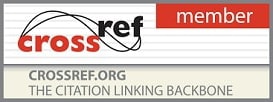
- Printed Journal
- Indexed Journal
- Refereed Journal
- Peer Reviewed Journal
Impact Factor: Impact Factor(RJIF): 5.3
International Journal of Home Science
2021, VOL. 7 ISSUE 2, PART B
A study to assess the snacking pattern among adolescents and young adults and its effect on the meal pattern and overall nutritional status
Author(s): Krishna R Jogi and Dr. Rekha Battalwar
Abstract:
A very high proportion of adolescents and young adults have a habit of snacking in between meals. Snacking might influence the meal patterns of the youth and contribute to improper nutritional intake and skipping of meals.
A very high proportion of adolescents and young adults have a habit of snacking in between meals. Snacking might influence the meal patterns of the youth and contribute to improper nutritional intake and skipping of meals.
Objective: To study the association of snacking pattern with skipping of meals and to observe the impact of snacking pattern on the nutritional status of the adolescents and young adults.
Methodology: A random sampling method was used for a co relational study with sample size of 150 from Mumbai City. Survey based research design was used, where the information was obtained with the help of Google forms from individuals of the age group 13 to 25 years. Out of the 150 participants, 48.7% were males and 51.3% were females. The analysis was done using Statistical Package of Social Software for Windows (SPSS, version 20). The analysis of data included t-tests, Chi-Square tests and ANOVA. p value < 0.05 was considered to be statistically significant.
Results: Approximately 50% of the participants who skipped breakfast were known to consume snacks on a regular basis with p value < 0.05. The most common reason found for snacking was cravings in 62% of the participants followed by boredom (57.7%), stress (44.4%), tiredness (36.6%), as a reward (33.8%) and sadness (30.3%) with p value < 0.05. The frequency of consumption of unhealthy snacks was higher in males as compared to females with p value < 0.05. The consumption of healthy snack foods was found to be higher in females as compared to males with p value < 0.05. It was also found that the frequency of skipping meals was lower in females as compared to males. The energy, carbohydrate and fat consumption was significantly higher in participants who consumed snacks due to stress than the ones who did not snack due to stress. (p<0.05).
Conclusion: There was a significant positive relationship between snacking and skipping of breakfast. The frequency of consumption of unhealthy snacks was higher in males as compared to females. It was also seen that the frequency of consumption of healthy snacks was higher in females and lower in males. The tendency to consume snacks when in stress, while having a craving or due to sleeplessness had caused an increase in the overall energy, carbohydrate and fat consumption
Pages: 116-120 | 801 Views 483 Downloads

How to cite this article:
Krishna R Jogi, Dr. Rekha Battalwar. A study to assess the snacking pattern among adolescents and young adults and its effect on the meal pattern and overall nutritional status. Int J Home Sci 2021;7(2):116-120. DOI: 10.22271/23957476.2021.v7.i2b.1156





